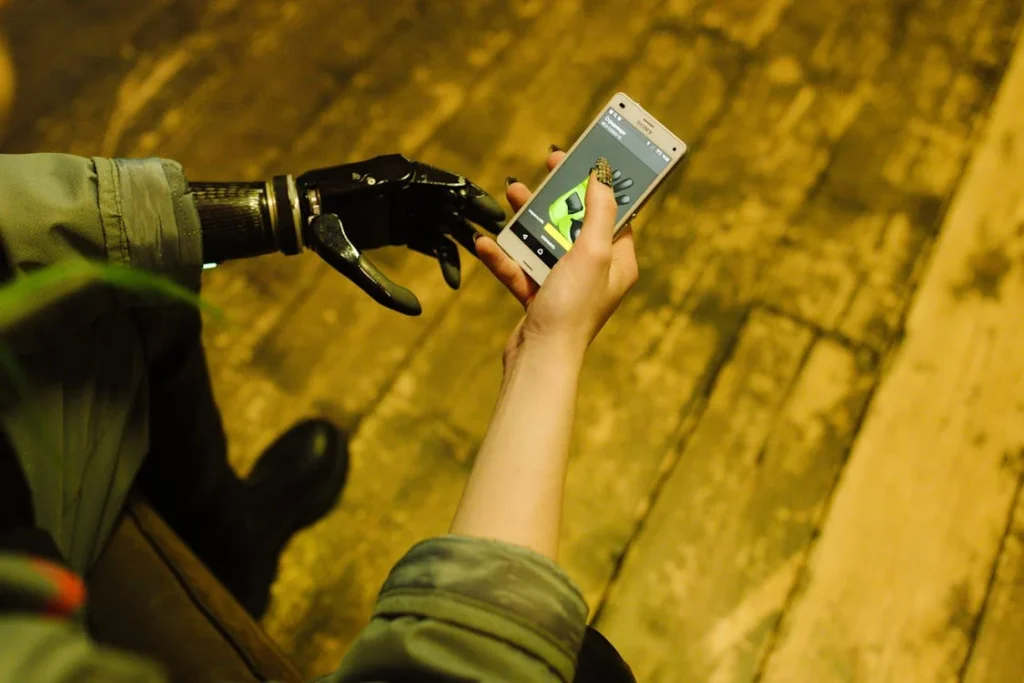No two people heal the same way. Some move fast. Others take their time. Some need extra support. Others just need a nudge. That’s why one-size-fits-all rehab often fails. It doesn’t speak to who you are or how you heal.
But what if your therapy could listen? What if it could learn from your movements, your progress, and your effort—and shape itself just for you?
That’s what data-driven gamification does.
By combining real-time feedback with smart tracking, rehab becomes personal. Every exercise, every level, every challenge adapts to match you. It feels just right—not too easy, not too hard. It keeps you motivated. And most of all, it makes the journey feel your own.
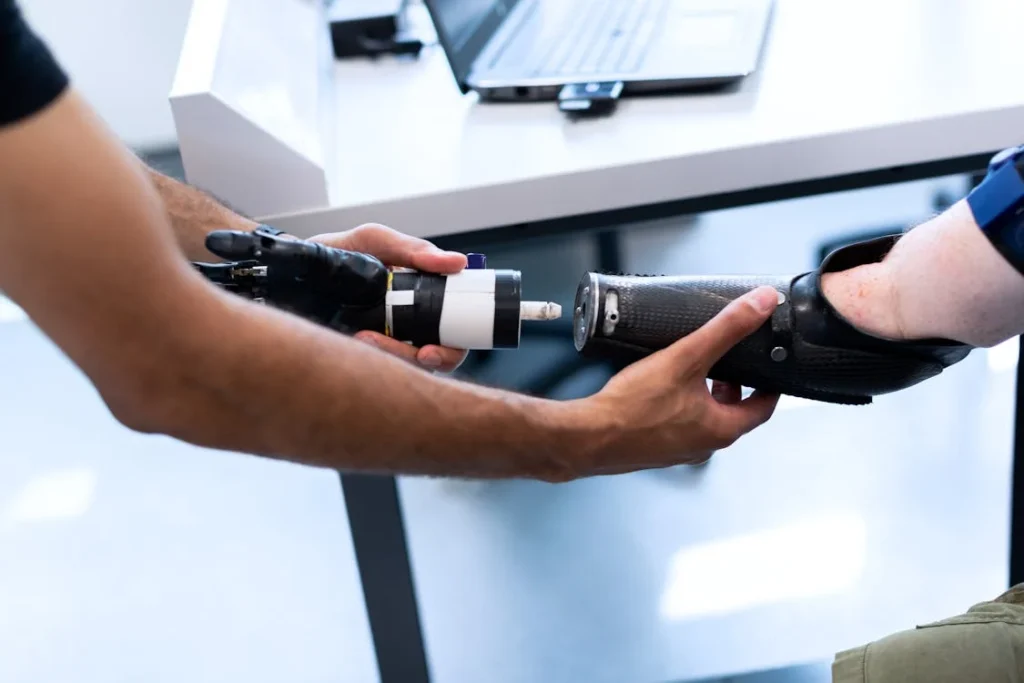
Why Personalization in Rehab Matters More Than Ever
Every Body Is Different—And So Is Every Recovery
When someone starts rehab, they don’t come with a script. They come with a story. Maybe they’ve had an accident. Maybe they’ve lost a limb. Maybe they’re learning how to move again after a long break. Whatever the reason, the way they heal is deeply personal.
Some people respond quickly. Others need time. Some feel excited. Others feel scared. And this is where many traditional rehab programs fall short. They follow a fixed routine. Same steps, same schedule, same goals—for everyone.
But here’s the problem: when therapy doesn’t match the person, it doesn’t stick.
That’s why personalization matters so much. Because the more therapy feels like yours, the more likely you are to keep going. And that’s what turns effort into progress.
Data Is the Key to Personalized Healing
Now imagine if your rehab program could see how you’re doing—not just once a week, but every single time you move. It notices when you’re struggling. It sees when you’re improving. It even understands when you’re tired or distracted.
That’s what happens when data becomes part of the process.
Modern gamified therapy apps collect information as you move. How long you held a grip. How many fingers flexed. How fast you tapped. And they use this data not to judge you—but to support you.
If the app sees that you’re having a tough time, it might slow things down. If it sees that you’re breezing through a level, it might offer a harder challenge. If it notices that you’re skipping sessions, it might try something new to re-engage you.
It adjusts. It adapts. It learns with you.
This kind of smart feedback turns therapy into something that grows alongside you—like a coach who knows exactly when to push and when to pause.
Why Gamification Makes It Work
Gamification is the secret sauce that makes data-driven rehab feel like fun instead of work.
Let’s say you’re learning to use a bionic hand like Grippy™. The early days might feel awkward. But the app turns your movements into a game. Close your fingers? That’s a point. Hold a grip for five seconds? That’s a badge. Complete all your tasks for the day? That’s a new level unlocked.
Now you’re not just doing exercises—you’re chasing wins. You’re seeing your progress. You’re getting rewards. And most importantly, you’re building momentum.
But here’s the genius part: the app isn’t giving out rewards randomly. It’s using your data to decide what kind of encouragement works best. It sees what challenges you respond to. It notices when you give up too soon. And it changes the way it motivates you based on what works for you.
That means two users doing the same therapy might see completely different games. One might get colorful stars. Another might get a calm voice saying “Well done.” One might prefer speed games. Another might like strength-based challenges.
And that’s exactly how it should be.
Because real healing happens when the experience feels right—not generic.
The Emotional Impact of Being Seen
There’s something powerful about being understood.
When an app or device responds to your unique rhythm—when it notices your effort and responds instantly—it feels like someone is finally paying attention. And in rehab, where people often feel alone or invisible, that matters more than we think.
This emotional connection boosts confidence. It makes people believe in themselves again. And when you believe in yourself, you keep showing up. You keep trying. You keep growing.
That’s the emotional magic of personalized rehab. It doesn’t just train your muscles—it lifts your mindset.
Technology That Doesn’t Replace—but Enhances
Some people worry that bringing data and games into rehab makes it less human. That it replaces therapists or real connection.
But here’s the truth: when done right, this technology doesn’t replace the human touch—it amplifies it.
Therapists can use the data to better understand how their patients are doing outside the clinic. They can adjust care plans based on real results, not just what patients remember. And patients can arrive at sessions feeling more confident, more prepared, and more in control of their own progress.
It’s a partnership. A loop of care and support that continues even after the session ends.
That’s the real promise of data-driven gamification—it turns every moment, whether at home or in a clinic, into a chance to improve.
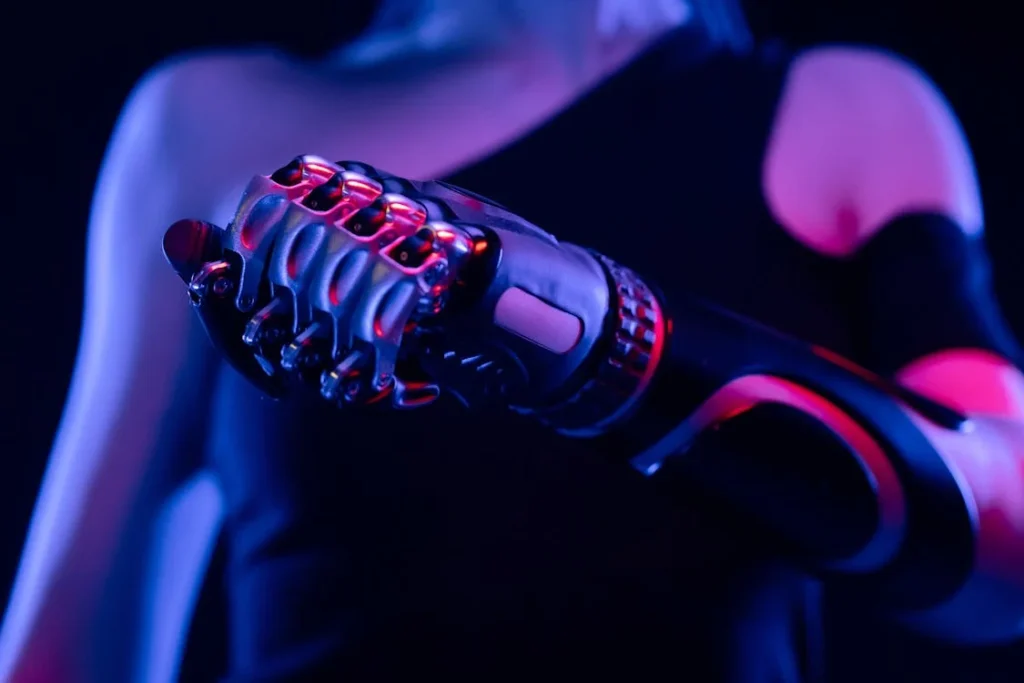
How Smart Data Shapes Smarter Recovery Plans
Every Move Tells a Story
In traditional rehab, progress is measured in snapshots. A weekly check-up. A therapy log. A patient’s memory of how they felt that day. But human memory isn’t perfect. And progress doesn’t always show itself in obvious ways.
That’s where data-driven gamification brings something new. It doesn’t rely on memory or mood. It watches each movement. It tracks every session. It collects little bits of information each time the user plays a game, flexes a finger, or holds a pose. And those little bits add up to a big story.
Maybe the user is improving, but only in the mornings. Maybe one motion always causes trouble. Maybe speed is better than strength—or the other way around. These insights aren’t guesses. They’re facts drawn from real behavior.
This makes progress easier to understand—and easier to act on.
Now, rehab isn’t based on a fixed calendar. It’s based on you.
The system knows when you’re ready to move forward, and when you might need more time. It adjusts without you having to say a word. And that means every session feels more focused, more useful, and more encouraging.
Small Tweaks, Big Differences
Personalized rehab isn’t always about making huge changes. Sometimes, the smallest shift—changing the color of a button, increasing the size of a target, adding five extra seconds—can make all the difference.
When the app collects your data, it starts to understand what makes you try harder, what frustrates you, and what keeps you coming back. Maybe you do better when you’re given quick, playful feedback. Or maybe you respond best when things feel calm and quiet.
Once the system understands that, it can begin to shape each session around what keeps you engaged.
This kind of customization is subtle—but powerful.
And the best part is, it happens behind the scenes. You don’t need to adjust settings. You don’t need to learn new rules. The system does the thinking, so you can focus on healing.
Supporting Long-Term Habits, Not Just Short-Term Wins
One of the greatest challenges in rehab is keeping people committed after the first few weeks. The novelty fades. Life gets busy. And without results they can see, people stop.
That’s why personalization powered by data is so important—it keeps the experience fresh. It notices when you’re slipping and switches things up. It adds new goals when you’re ready. It reminds you of how far you’ve come.
This creates something bigger than just a therapy plan. It builds a relationship between the user and the tool. It becomes part of your day. And when something becomes part of your day, it becomes part of your life.
That’s how habits stick. That’s how recovery lasts.
Because true healing isn’t just about getting better—it’s about staying better.
How This Works with a Bionic Hand Like Grippy™
When someone starts using a bionic hand, like Grippy™, it’s not just their muscles that need training. Their brain needs to learn new patterns. Their confidence needs time to grow. And their trust in the device needs to build day by day.
Grippy™, combined with a gamified rehab app, becomes more than just a prosthetic. It becomes a feedback loop. Every time the user flexes their wrist or squeezes with their fingers, the app records that motion. It tracks how long the movement lasted. It measures how smooth it was. It sees how hard the person is trying—even if they don’t succeed right away.
The app then adjusts based on that effort.
If a certain grip is weak, it offers a challenge to strengthen it. If progress is steady, it introduces new games to test fine motor skills. If the user is losing motivation, it throws in a fun twist or a surprise reward.
And all of this happens because the app is not just watching—it’s learning.
This makes Grippy™ feel less like a piece of equipment and more like a teammate. A partner in progress. A daily companion that grows with the user, learns with them, and celebrates every small victory.
A Future That Feels More Like You
What makes data-driven gamification so exciting is not just what it does today—but what it promises for tomorrow.
As more people use these tools, the systems get smarter. The patterns become clearer. And the possibilities for personalization grow. In the future, your therapy may know you better than you know yourself. It might see patterns in your progress that even a trained therapist might miss.
And instead of therapy feeling like a fixed path, it becomes a flexible, living journey—one that responds to your needs, your mood, your goals, and your pace.
It becomes yours.
And that, more than anything, is what makes healing meaningful.
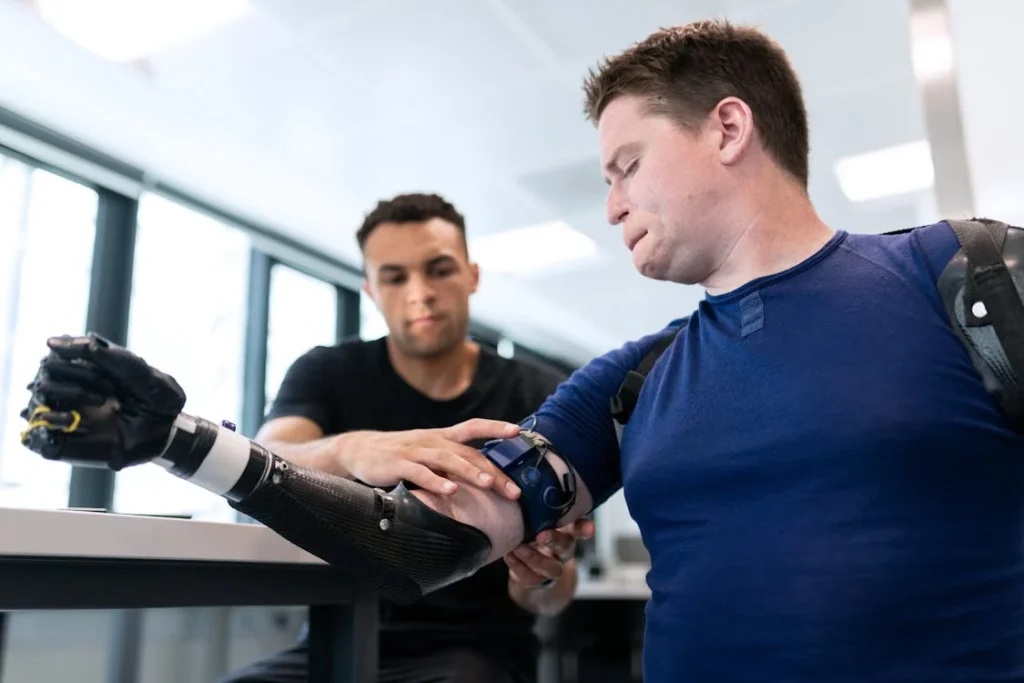
Emotional Motivation Meets Intelligent Movement
The Role of Emotions in Recovery
Rehabilitation is not just about muscles and movements. It’s also about mindset. The emotional ups and downs that come with recovery can be intense. One day, you’re excited because something worked. The next, you’re frustrated because it didn’t.
This emotional rollercoaster plays a huge role in how people stick with their rehab routines. That’s where personalized, data-driven gamification becomes so powerful. Because it doesn’t just track your body—it responds to how you’re feeling.
Let’s say the app notices that you’ve skipped a couple of sessions. It doesn’t judge you. It gently invites you back with a new challenge. Maybe it’s a shorter one. Maybe it comes with a message like, “Welcome back, we missed you.” That one line—delivered at the right time—can be enough to bring someone back on track.
By reading your data and understanding your patterns, the app starts to sense not just your movements, but your motivation. And that emotional awareness turns the whole experience into something that feels supportive, not demanding.
Gamification Makes Movement Meaningful
For many users—especially those learning to use a prosthetic like Grippy™—the early days of rehab are full of awkward attempts. Movements feel strange. Tasks feel difficult. It’s easy to feel discouraged. But when those movements are wrapped in gamified experiences, the meaning shifts.
Now, instead of “try to close your hand five times,” the task becomes “save five virtual animals by catching them with your hand.” Instead of “hold a grip for 10 seconds,” it’s “keep the spaceship from falling.”
These fun frames give your movements purpose. And that purpose helps override the discomfort. You’re not just moving because someone told you to. You’re moving because you want to complete the task, win the game, or beat your previous score.
That makes a huge emotional difference.
And because the app watches how you respond to each challenge, it learns which types of games push you without overwhelming you. Over time, it builds a sequence of experiences that feel good to complete—and that’s what keeps people coming back.
Confidence Built Through Personal Wins
Confidence is one of the most important outcomes in any rehab journey. When someone believes they can recover, they work harder. They stay motivated. They try, even when it’s tough.
Personalized gamification helps build that confidence by making success feel reachable. The app knows what you can do today—not what someone else can do. So when it sets a challenge, it’s one that fits you.
And when you complete it—even if it’s something small—you get an immediate reward. A sound. A message. A new badge. These aren’t just fun features—they’re emotional fuel.
Every time you succeed, even a little, your brain says, “I can do this.” That belief is like a light inside that grows brighter with each win.
Over time, those personal wins become your foundation. They help you feel ready for bigger challenges. And that steady climb, made possible by smart data and gamified feedback, is what builds true, lasting confidence.
Therapy That Adapts to Life’s Changes
Life doesn’t always move in straight lines. Some days are smooth. Others are messy. Schedules shift. Pain flares up. Energy runs low. Traditional rehab plans can’t always adjust for these changes—but data-driven tools can.
If the app sees you moving slower, it gently lowers the challenge level. If it sees you skipping exercises, it might send a shorter one or change the format. Maybe it adds music. Maybe it offers a different kind of game that feels less intense.
This flexibility means you don’t fall behind. You don’t get discouraged. You stay connected—even when life gets chaotic.
And that’s what makes this kind of therapy so powerful. It doesn’t expect perfection. It meets you where you are. Then it grows with you.
From Routine to Relationship
What starts as a simple rehab routine eventually becomes something deeper: a relationship between you and your recovery.
With data-driven gamification, you’re not just logging in to “do your therapy.” You’re checking in with a system that knows you, tracks your journey, and celebrates every step. The app remembers your progress. It adapts to your needs. It gently pushes you when you’re ready and supports you when you’re not.
That kind of connection turns therapy from a task into a partnership. It makes you feel seen, heard, and supported. And that emotional safety is what allows real transformation to happen.
You’re no longer just a patient following instructions. You’re a person in charge of your own healing—with tools that believe in your ability to get there.
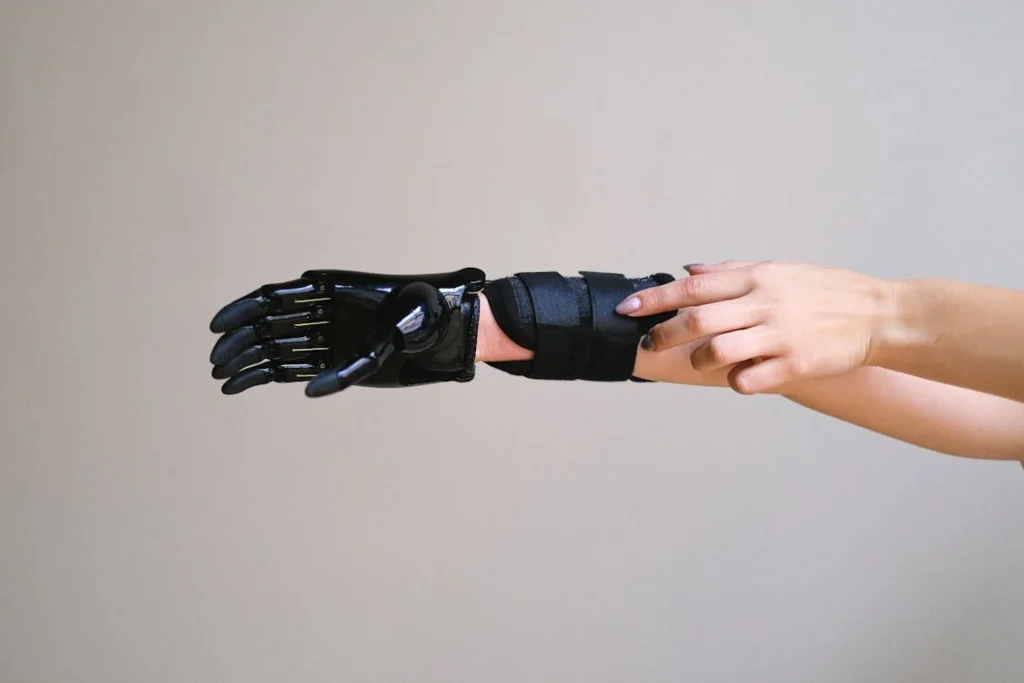
From Passive Participation to Active Progress
Moving From “Doing Therapy” to “Owning Recovery”
There’s a big difference between showing up for therapy and truly engaging with it. Many patients do what they’re told. They perform the motions. They go through the checklist. But they don’t always feel involved. And when you don’t feel involved, it’s easy to lose connection and care less about the outcome.
Gamified therapy powered by data changes that. It shifts the role of the patient from passive follower to active participant. And that one shift—feeling like the work is yours—can be life-changing.
Imagine someone using their bionic hand for the first time. Instead of simply being told, “do these movements,” they open an app and see a challenge that’s built just for them. Based on their performance yesterday. Their grip strength. Their attention span. It’s short because the app knows they struggled last time. It’s cheerful because the app noticed they skipped a day.
Now it’s not just therapy. It’s their journey. Their game. Their growth.
That feeling of ownership drives deeper focus. Deeper effort. And, ultimately, better results.
Therapy That Learns With You, Not Just About You
The smartest therapy tools don’t just learn about you—they learn with you. Every session builds on the last. Every missed movement, every great try, every wobble, every success—it’s all noted. Not for punishment, but for personalization.
That’s the difference between a system that watches and a system that understands.
When an app watches a user try to do a movement again and again but not quite get it, it doesn’t label it as failure. It identifies it as a pattern. It adjusts tomorrow’s exercise. It shifts the difficulty. It maybe even offers a motivational nudge. It knows that one hard day doesn’t define you—and it makes sure you don’t feel like it does, either.
Over time, this adaptive rhythm builds trust. The user begins to see the app not as just a tool, but as a kind of coach. One who watches closely, listens carefully, and tailors feedback to help them move forward, no matter how slow or fast.
This kind of learning-centered therapy keeps the experience fresh. And when therapy feels fresh, it stays meaningful.
Removing Fear From the Learning Curve
Trying something new, especially when it involves your body, comes with fear. Fear of failure. Fear of pain. Fear of looking weak. Many people carry this silently into their rehab routines. And even a small mistake—dropping something, not completing a task—can feel like a huge setback.
Gamified therapy supported by real-time data offers something rare: a space where it’s safe to fail.
If you miss the target, the app doesn’t buzz with red. It gently resets. If you try again, it rewards the effort, not just the outcome. If you pause, it waits. There’s no penalty. No shame. Just encouragement and adaptability.
This creates a feedback loop based on compassion.
And when people feel emotionally safe, they take more risks. They try more often. They engage more deeply. They stop holding back.
That emotional shift opens the door to greater physical progress. Because without the fear, the brain can focus on the task. Without the pressure, the hand can practice freely. And without judgment, the heart stays open to growth.
More Than Metrics: A Mirror to Progress
Sometimes, we don’t notice how far we’ve come until someone shows us. That’s one of the hidden gifts of data in rehab.
With every movement recorded, every grip measured, every tap logged, a clear picture starts to form. Not just numbers on a chart—but a story of effort. A story of improvement. A story of resilience.
One day, a user might open their rehab app and see that they’ve completed 50 sessions. That they’ve improved their grip strength by 30%. That they’ve logged 100 successful movements with their bionic hand. These aren’t just stats. They’re proof. Proof that effort turns into ability. That small steps turn into milestones.
This kind of reflection builds self-belief. It reminds users of how strong they’ve become. And it helps them see therapy not as a burden—but as a triumph.
When your data becomes a mirror to your strength, your whole relationship with recovery changes.
Designed for Dignity, Driven by Data
At Robobionics, we don’t just build bionic hands. We build dignity. We believe that healing should be personal. That therapy should feel like it’s built around your life, not the other way around. That technology should support, not replace, the human journey.
That’s why our gamified rehab app works hand-in-hand with Grippy™ to create a recovery path that feels alive, thoughtful, and encouraging.
Because when data is used with care, it doesn’t reduce you to numbers. It helps you rise beyond them.
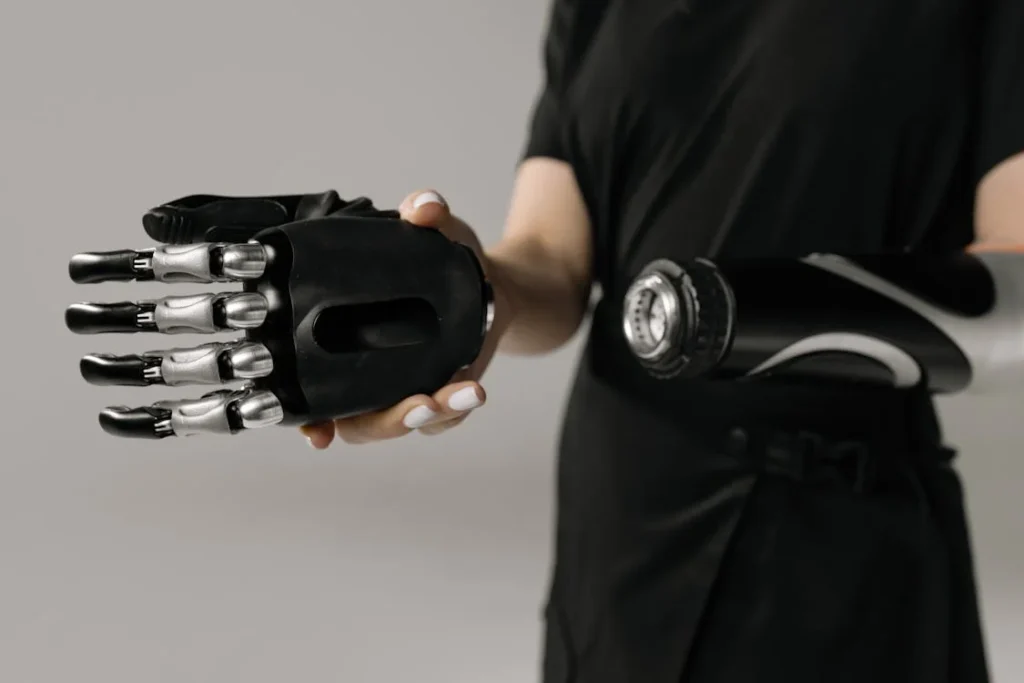
Bridging the Gap Between Patients and Providers
How Data-Driven Gamification Enhances Clinical Support
Most therapy happens away from the clinic. Patients might only see their physiotherapist once or twice a week. The rest of the time, they’re at home—practicing (or not), struggling (maybe silently), and making progress that nobody sees. This gap between sessions can be frustrating for both sides.
Patients may feel unsure if they’re doing the exercises correctly. Therapists may feel uncertain about what’s actually happening outside their care. And that missing information can lead to slow adjustments, missed problems, or even preventable injuries.
Data-driven gamification fills that gap.
Every time a user interacts with their therapy app, the system quietly records their progress. It notes how often they log in, what they achieve, what they skip, and where they improve. This creates a clear picture of their rehab journey—not just in the clinic, but in real life.
This data can then be shared (securely) with their therapist. Now, instead of asking “How did the week go?”, the therapist already knows. They can walk into the session with insights: “I saw you’ve been improving on your grip control—let’s build on that.” Or, “I noticed some trouble with finger flexion—let’s try a new approach.”
This changes the conversation. It turns guesswork into guidance.
More Time for What Matters
When therapists already understand a patient’s challenges and wins before the session even starts, it saves time. No more backtracking. No more long explanations. The session can jump straight into action, into support, into progress.
This makes therapy more efficient—and more focused on what really matters: the patient’s next step forward.
It also builds a better relationship. The patient feels seen. The therapist feels informed. And both feel more aligned in the shared goal of recovery.
Spotting Trouble Before It Gets Bigger
Data doesn’t just show progress. It can also be the first sign that something’s wrong.
Maybe a patient who used to log in daily suddenly stops. Maybe their scores drop sharply. Maybe they skip one particular exercise every time. These aren’t just numbers—they’re signals.
They might point to pain. Frustration. Fatigue. Or even emotional distress. Without data, these issues could go unnoticed until they turn into setbacks. But with data, the system can flag them early.
A quick message from a therapist. A tweak in the app. A conversation about what’s changed. These early interventions can prevent problems from growing—and help the patient stay on track.
That’s not just smart therapy. That’s compassionate care.
Creating a Community of Support
Data doesn’t have to be private. It can also be shared—with the right people, in the right way—to build community.
Some users might choose to share their progress with friends, family, or support groups. A grandparent might proudly show their grip score to their grandchildren. A teen might compete with a friend in rehab. A parent might keep track of their child’s therapy journey through a shared dashboard.
These small moments build connection. They remind the user that they’re not alone. That people care. That their effort matters—not just to them, but to others too.
When healing becomes something shared, it becomes stronger.

Gamified Data as a Tool for Self-Discovery
Learning About Yourself Through Play
Rehabilitation is often focused on the end goal—restoring strength, improving function, getting back to daily life. But the process itself can teach you a lot about who you are. How you respond to challenge. What keeps you going. Where you hesitate. When you push through.
With data-driven gamification, the therapy experience becomes a window into your own behavior.
Each session, each challenge, each reaction is captured—not to track you like a machine, but to reflect you like a mirror. How fast do you respond under pressure? Do you thrive with repetition or need variety? Are you more motivated by visual rewards or sound effects?
Over time, this data paints a rich picture—not just of physical recovery, but of your unique learning and motivation style. You begin to notice your own patterns. Your strengths. Your blind spots. And this self-awareness becomes a hidden benefit of rehab.
It’s not just your body that gets stronger. It’s your understanding of yourself.
Turning Data Into Confidence
When therapy is just repetition, you may forget how much you’re actually doing. But when an app shows you that you’ve improved reaction speed by 20%, or that your success streak has hit 10 days in a row, it creates clarity.
And clarity builds confidence.
It helps you feel in control. It helps you see not just what you’ve done, but what you’re capable of doing next. This feeling—“I’m stronger than I thought”—is one of the most valuable outcomes of rehab. It’s not measured in muscle or movement, but in belief.
Data makes that belief visible.
Owning Your Narrative
For many people using a prosthetic or recovering from trauma, identity becomes a complex space. You’re adjusting to change. You’re navigating uncertainty. And sometimes, you’re rebuilding how you see yourself.
Gamified data helps you reclaim that story.
Instead of viewing yourself as someone who’s “recovering” or “injured,” you begin to see yourself as someone who’s achieving. Scoring. Winning. Growing.
You are not just healing—you’re leveling up.
And that shift in narrative is powerful. It puts you back in the driver’s seat. It helps you stop focusing only on what was lost—and start noticing what is being built, every single day.
That’s the magic of data-driven gamification. It doesn’t just track your journey—it helps you own it.
Conclusion
Rehab should never feel like guesswork. It should feel like growth. With data-driven gamification, therapy becomes smarter, softer, and more personal. It listens. It adapts. It responds to you. Every tap, every flex, every try adds up—not just to stronger muscles, but to deeper confidence, clearer goals, and lasting motivation.
At Robobionics, we believe recovery should be as unique as the person behind it. That’s why we built our gamified rehab app to work hand-in-hand with our bionic hand, Grippy™. Together, they create a feedback loop that’s not only smart, but supportive. Because when therapy fits your pace, your mood, and your story—it stops feeling like a burden. It becomes your path back to freedom.
You’re not just doing exercises. You’re discovering yourself, one level at a time.
Book a free demo today.
Let’s make your recovery journey yours—and one you’ll want to keep walking.



